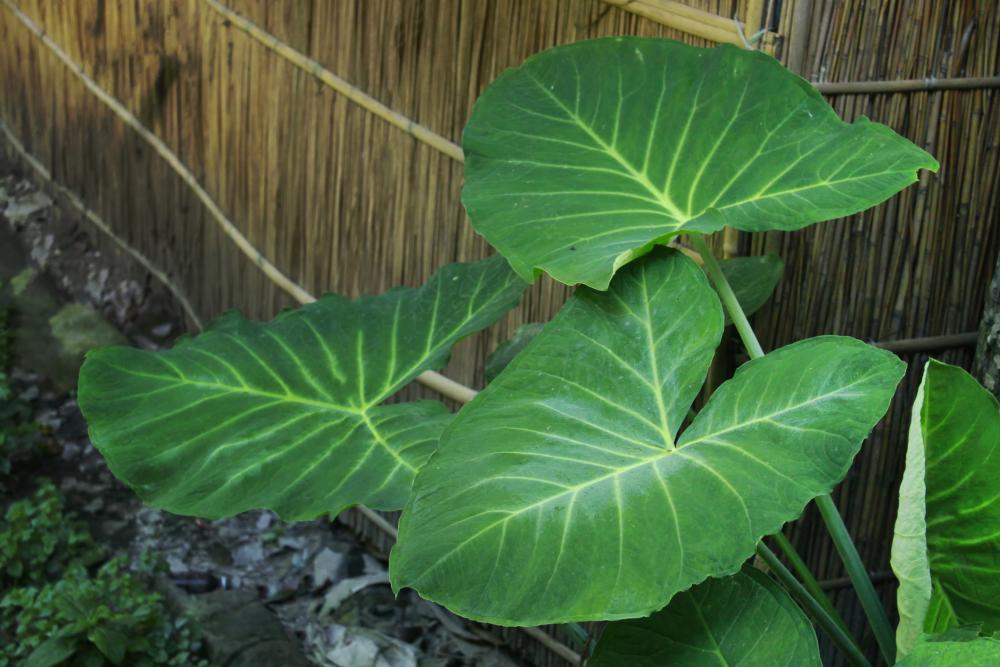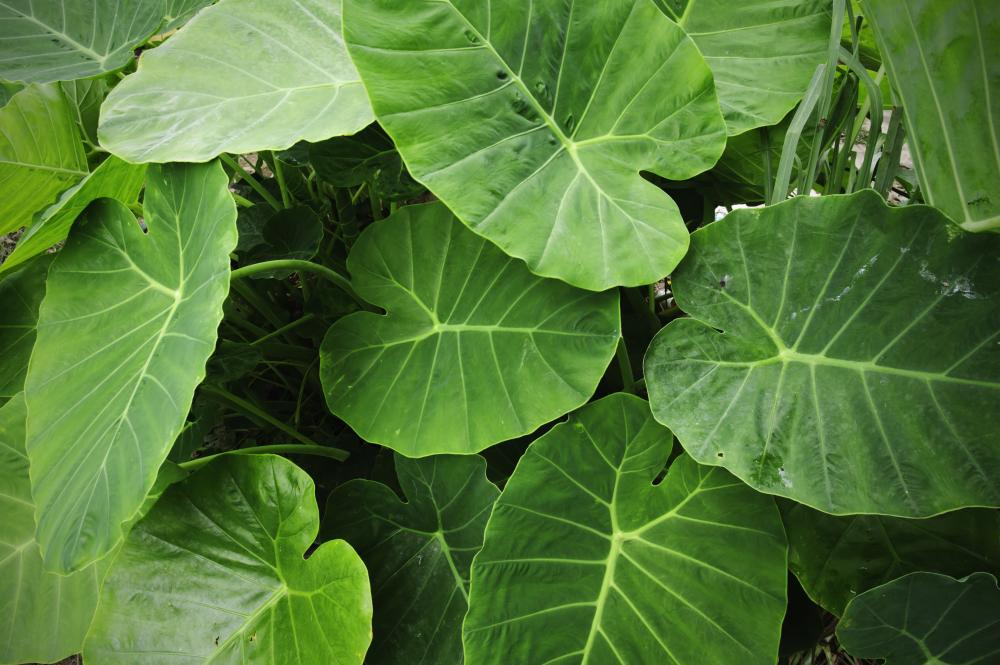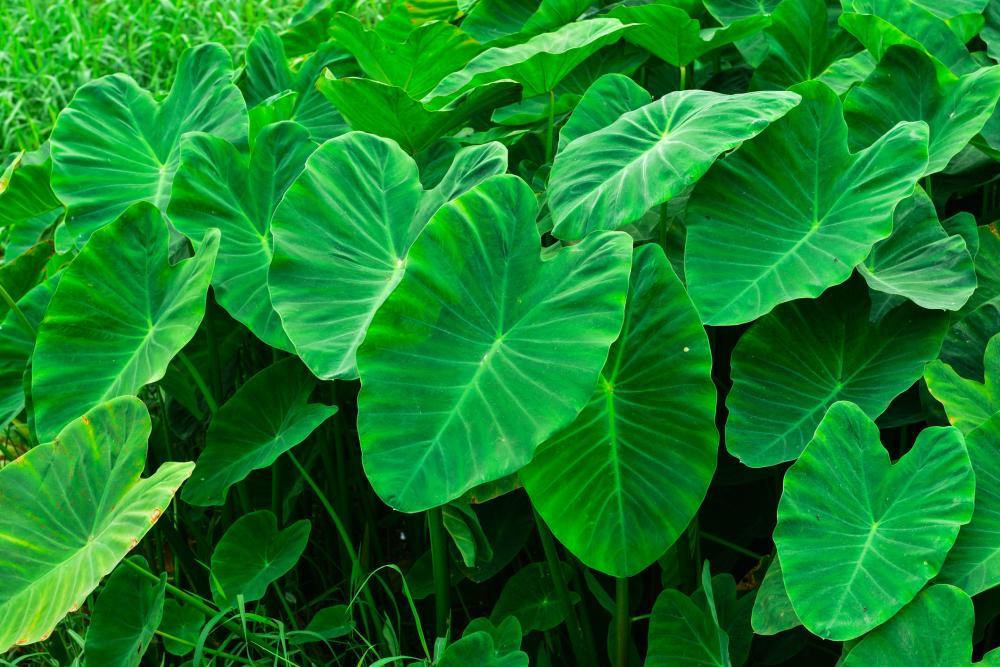Common Elephant Ear Plant Growing Problems And How To Fix Them
The elephant ear plant is a unique ornamental plant with its large and broad leaves. But as with all plants, it is prone to some growing problems. Sometimes the plant is just not doing well. There are no pests or diseases attacking it, it’s just not growing as you’d expect.
Other times the leaves which are the most distinct feature of the elephant ear plant start to droop, turn yellow, or have yellow or brown spots on them. Without healthy leaves, the ornamental plant is practically a sore sight. So how would you deal with all of these elephant ear plant growing problems? Read on to find solutions for each and every one of those problems.
Elephant Ear Plant Not Doing Well
There comes a time when your elephant ear plant shows signs of distress and doesn’t look well overall. It’s hard to put a finger on what exactly is wrong with the ornamental plant. There are no telltale signs of pest infestations. No holes in the leaves or spots that indicate a fungal infection. Still, the general demeanor of the plant is not what you’d expect. Here are some of those symptoms:
- The leaves on the plant look stunted and don’t have the usual growth rate.
- The leaves and stalks don’t have that healthy variegated color. Instead, they look pale or even ashen.
- Deformed leaves can also appear and from the start appear like they’re not getting better.
- The stems are wilting and since they can’t carry the weight of the leaves, they collapse.
- Spots on the roots which won’t go away with time even after you feed the plant.
How to Fix It
With not much to go on but the overall demeanor of the elephant ear plant and the gut feeling that all is not well with the ornamental plant, you need to examine the leaves, stems, and roots closely. Every one of the above symptoms could point to a disease or less than ideal growing conditions.
- Leaves not growing or appearing stunted are symptoms of poor nutrients in the soil. More specifically, the basic NPK nutrients. The plant needs an extra dose of nitrogen to improve its growth rate. Apply a balanced 10-10-10 fertilizers once every 10 days and watch the ornamental plant regain its former splendor.
- Pale leaves are a symptom the soil lacks micronutrients. These 7 nutrients which include iron, boron, zinc, manganese, and copper are essential for the overall health of the plant. Apply plant food supplements in small doses and see if that improves the symptoms.
- If the leaves are deformed, that could be a sign the plant has a spider mite infestation. The tiny pests block the nutrients channels that transport moisture and food to the leaves which causes the deformation. Spray the leaves with neem oil or rub them with a swab soaked in rubbing alcohol to eliminate the pests. Also, remove the deformed leaves to trigger new and healthy growth.
- Wilting and collapsing stems are signs of drought stress. The plant is not getting enough water. Water the soil immediately and keep your irrigation regular.
- On the other hand, if the roots have spots, that could be a sign the soil is wet. Waterlogged soil leads to root rot. Hold off watering and allow the top 2 inches of the soil to dry out between waterings.
Elephant Ear Plant Not Growing
Another frequent growing problem that you might encounter with the elephant ear is that the plant just stops growing. This is not just about stunted leaves or short stems. The plant as a whole just looks like it’s frozen in time.
There are many causes for this stubborn problem. They range from temperature stress and low humidity levels to excessive sun exposure, overwatering, and underwatering. Too many causes might complicate the issue and you’d have to take a look at the environment around the plant and the amount of water you give it. Adjust all of these until you find the real reason.
How to Fix It
Without wasting too much time wondering about the plant, you need to get down to business and start fixing everything that’s wrong with the growing conditions. For example, you might have to do any or all of the following:
- Remove the plant from the window sill or away from direct exposure to sunlight. If the only spot for the pot is near the window, then draw a lace curtain to filter out the light and cut on the amount of UV light the plant receives.
- Cut down on watering and allow the soil to dry out between irrigations. Another reason for waterlogged soil is using clay soil or when the pot has small drainage holes or no holes at all.
- Amend the soil to make it loamy or sandy.
- Water the elephant ear plant regularly since little water leads to low growth rates.
- Ensure that the plant is in a place where the temperature ranges between 85 degrees F during the day and 60 degrees F at night. If the temperature drops below 60 degrees F, the plant will stop growing.
- Place a humidifier near the pot to keep the area humid all the time. If you don’t want to invest in a humidifier, you can mist the leaves about twice a week.
Elephant Ear Plant Leaves Drooping
When things are not going well for the elephant ear plant such as when it’s experiencing stress, the leaves will droop. This is the plant telling you that you need to do something quick and fix things around the pot. If you ignore the calls of help the big leaves are sending out, things could get worse and those large leaves would drop. If no help arrives on time after the leaves wither and drop, the plant could die. So what’s causing all of this?
Usually, it’s the wrong conditions around the plant that are causing this stress and leaf drooping. This includes inadequate watering (either too much or too little water), pests, diseases, and poor or too much lighting. The plant could be just dormant and there’s nothing wrong with it.
How to Fix It
Fixing an elephant ear plant with drooping leaves depends on the cause of the problem. Here are a few steps you can take to remedy the issue and bring the leaves back up.
- Check the soil for signs of sogginess. If the soil is wet even though the last time you watered it was 5 days ago, then the plant is overwatered. Hold off watering until the soil dries out or uproot the plant and repot it in fresh soil.
- Underwatering or dry soil can also cause the leaves to droop. The soil in containers often dries out faster than garden soil. So water the plant regularly once the top 2 inches of the soil are dry.
- Low humidity also causes the leaves to droop. Misting twice a week usually solves this problem. If you keep the pot in an office with air conditioners humming all the time, that contributes to low humidity. Mist the plant 3 times a week if you keep it in an office.
- If the plant is just dormant, there’s nothing for you to do. Just wait for it to come out of dormancy on its own. Cut back on watering and feeding for as long as the elephant ear plant is dormant. The leaves might drop during that time. That’s normal and new growth will start once the plant emerges from dormancy.
Elephant Ear Plant Leaves Turning Yellow
As we have stated, the leaves of the elephant ear plant are its main claim to fame. Without the large, variegated leaves, the ornamental value of the plant drops conspicuously. Put simply, without those leaves, many people won’t keep the plant in their offices or in the living area at home. So when those variegated leaves start turning yellow, you know you have got a problem on your hands and you need to intervene quickly before the plant deteriorates further.
While partial yellowing of some leaves is natural since the leaves have a life cycle and they naturally turn yellow, wither, and die eventually. But what’s not normal is when most of all the leaves on the plant turn yellow almost together. This could be caused by:
- Inadequate moisture that is either too much or too little.
- Dry air around the plant all the time.
- Too much or too little light.
- Pests could cause the leaves to turn yellow.
How to Fix It
So far we have covered different elephant ear growing problems and each problem has more than one cause. This is what complicates things with this plant. It’s never a single cause or a clear-cut case. When it comes to fixing a single problem, you’ll have to go through a litany of possible causes and try out different solutions. Here are some possible solutions to yellowing leaves.
- Improve the humidity levels around the plant by placing a tray full of water and some pebbles under the tray. You can also try misting, or letting a humidifier do the job.
- Bugs such as spider mites suck the juices out of the leaves and cause them to turn yellow. Eliminate pest infestations with neem oil spray. It’s a natural pesticide that has zero negative impact on the environment or people and pets that come in contact with the plant.
- Water the plant when the soil goes dry. If you water it too much, the roots start to rot and the leaves turn yellow. Too little watering can have the same effect on the leaves. So water lightly to get the soil moist.
- Use proper soil that is well-drained. Make sure the pot has drainage holes at the bottom.
Brown Spots on Elephant Ear Plant Leaves
And last but not least, the leaves of the elephant ear plant could display some brown spots. These spots are a symptom of fungal infections and you shouldn’t ignore them or hope they’d go away on their own. Most likely the opposite would happen. The spots get bigger, join and take up the whole surface of the leaf. Eventually, the leaf will drop but not before spreading the infection to the rest of the leaves on the plant.
Elephant ear plants become susceptible to fungal infections when they’re stressed because of inadequate growing conditions.
How to Fix It
The main cause of brown spots appearing on the elephant ear plant leaves is rust. This disease infects a stressed plant where the temperature is high, the lighting is too dim, or the humidity is too high. To fix this problem, adjust each one of those conditions.
- Make sure the temperature in the room or office doesn’t exceed 85 degrees during the day and doesn’t drop below 60 degrees at night.
- The plant should get enough light. Without placing directly under the sun, keep the pot near a window facing north.
- Adjust the humidity levels in the plant’s vicinity. If it goes above 70 percent, you’ll need to adjust it. Hold off misting for a couple of days or switch off the humidifier until the humidity stabilizes.


